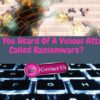Unlock the Power of Solar Energy in Freezing Temperatures for Survivalists
As a committed survivalist, you appreciate the critical need for achieving self-sufficiency, particularly when confronting the obstacles posed by harsh winter climates. One of the most pressing challenges you may face is effectively utilizing renewable energy sources in extremely low temperatures. While the cold might appear to be a daunting hurdle, there’s no cause for concern! This article explores the hidden potential of solar power in frigid environments. We are eager to share innovative strategies that empower you to harness solar energy competently, even in the most severe winter weather, by adopting a proactive and well-informed approach to your energy requirements.

It is a common misconception that solar electricity is only feasible in warm, sunny regions. However, thanks to significant advancements in technology, capturing solar energy in colder climates is entirely achievable. Let’s examine the various methods that empower solar power systems to excel in extreme cold and how you can leverage this sustainable, eco-friendly energy source to significantly improve your lifestyle and survival strategies. Understanding these techniques is essential for maximizing your solar energy output, ensuring you are equipped to thrive in challenging conditions.
To effectively utilize solar panels in winter, it’s vital to recognize that they generate energy using sunlight, not warmth. Even though lower temperatures can impact the efficiency of solar panels, they do not make them ineffective during the winter months. By adopting strategic planning and innovative techniques, you can enhance your solar power system’s performance, ensuring optimal functionality even in the coldest settings. Gaining knowledge about how solar panels operate across different temperatures will enable you to make informed choices that align with your energy needs while avoiding potential pitfalls.
One crucial aspect of optimizing solar electricity in cold climates is the angle and orientation of your solar panels. Correct alignment can significantly increase the amount of sunlight your panels capture throughout the day. During winter months, the sun’s path is lower in the sky, making it essential to adjust your panels to a steeper angle. This modification allows for maximum sunlight absorption, thereby boosting their efficiency. Furthermore, directing the panels toward the south can enhance their sunlight collection capabilities, which is particularly advantageous during the shorter days of winter, ensuring you get as much energy as possible.
Snow accumulation poses another considerable challenge in colder regions, as it can obstruct the effectiveness of your solar panels. A thick layer of snow can drastically reduce electricity output. However, by proactively addressing this issue, you can uncover effective solutions. Consider installing snow barriers or heating elements on your solar panels to prevent snow buildup. These enhancements facilitate the melting of existing snow and ensure continuous energy production, even during snowstorms. Regularly clearing snow manually can also serve as an effective maintenance strategy, helping keep your panels functioning optimally and free from obstructions that could hinder performance.
Incorporating battery storage systems is a forward-thinking strategy that can significantly elevate solar power efficiency in cold conditions. These batteries store excess energy generated during daylight hours for use when sunlight is limited or temperatures plummet. The significance of battery storage becomes particularly apparent in freezing conditions, as it guarantees a dependable electricity supply when it’s needed most. By investing in a high-quality battery system, you can maintain your energy independence and be well-prepared for unforeseen circumstances that may arise during severe weather events, ensuring you remain self-sufficient.
Choosing the appropriate type of solar panels is essential for optimizing your solar energy system’s efficiency in cold climates. Certain panels are specifically engineered to perform better at lower temperatures and may incorporate advanced insulation or specialized materials to mitigate the effects of frost and ice on their performance. By making an informed decision regarding the panel types that best suit your cold environment, you can maximize energy production and ensure that your solar power system effectively meets your energy needs without unnecessary losses.
Beyond technical specifications, it is crucial to have your solar power system installed by professionals who have experience with cold climate conditions. Skilled installers can provide best practices for installation, ongoing maintenance, and troubleshooting, offering invaluable insights into optimizing your system. Their expertise will help ensure that your solar setup operates at peak efficiency, even under the most challenging winter circumstances, ultimately enhancing the reliability of your energy source and providing you with peace of mind.
Maintaining a proactive and prepared mindset is essential in survival scenarios. While solar power can serve as a reliable and effective energy source in cold climates, having backup generators or alternative energy solutions is paramount. These additional measures will act as a safety net in case of prolonged periods of low sunlight or unexpected system failures. By integrating solar power with other renewable energy sources, you can further enhance your energy independence and resilience, ensuring that you are well-equipped to tackle any weather-related challenges that may arise, securing your survival in any situation.
Solar energy is not confined to warm and sunny areas; it holds immense potential even in the coldest climates, provided it is strategically planned and technically advanced. By adjusting your panel angles, mitigating snow accumulation, incorporating battery storage, selecting suitable solar panels, relying on skilled installation, and having contingency plans, you can unlock the full potential of solar energy in extreme cold. Embrace renewable energy with confidence and resourcefulness, securing your survival and sustainability in any climate, paving the way for a self-sufficient future.
The post Solar Energy in Extreme Cold: Unlocking Its Full Potential appeared first on Survival Bite.
The Article Solar Energy’s Full Potential in Extreme Cold Conditions Was Found On https://limitsofstrategy.com
The Article Unlocking Solar Energy’s Potential in Extreme Cold First Appeared ON
: https://ad4sc.com










Comments are closed